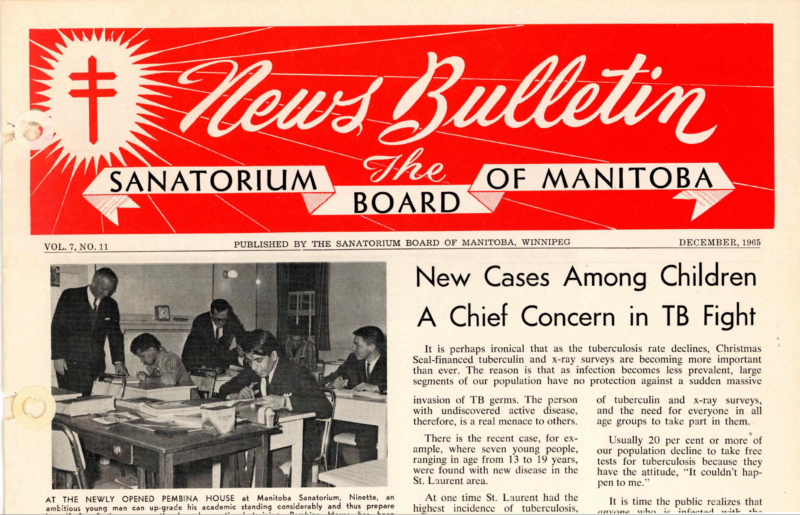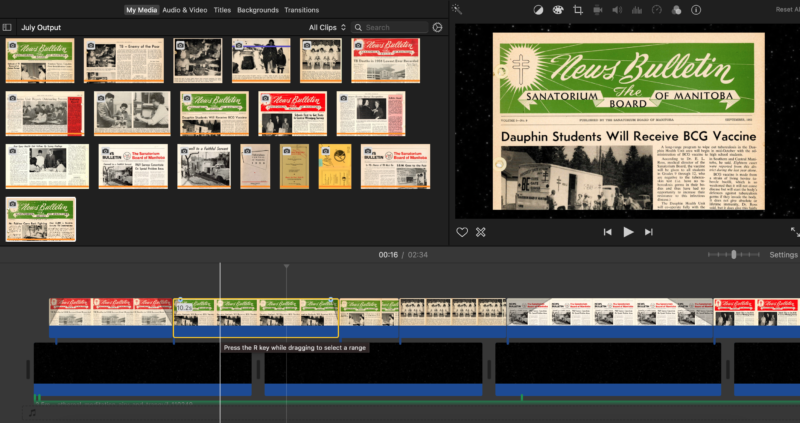Research Assistant Kristina Colmer: Working at the MITHP
September 6, 2022

News Bulletin of the Sanatorium Board of Manitoba
Our team at MITHP has been working hard the past few months to digitize, catalogue, and upload Manitoba’s historical tuberculosis content to our website and social media. In the spring of 2022, I was hired to assist with tasks related to the project’s archival research. The majority of my work was performed under the supervision of Dr. Erin Millions.
Currently, I am completing a Bachelor’s of Science in Biology, including a minor in Indigenous studies, at the University of Winnipeg with an expected graduation date in Spring 2023. Previously I have worked as a research assistant at the University of Winnipeg in the Faculties of Geography and English, but never in the History department. As a non-historian, I was intrigued to apply for this job to assist in archival research and to challenge myself to further my understanding of the treatment of Indigenous peoples under prior Manitoba’s health care system policies.
Over spring and summer, I did archival research at the Archives of Manitoba and assisted with data entry and cataloguing of the Sanatorium Board of Manitoba’s Annual Reports, News Bulletins, and Messengers of Health as far back as the 1910s. I was situated in the Manitoba’s Indigenous Tuberculosis History Project’s office located in the Kishaadigeh Collaborative Research Center at the Richardson College for the Environment & Science Complex. I was in charge of scanning, editing, cataloguing and uploading the Sanatorium Board of Manitoba document that are featured in the TB Archive on the MITHP website. The archive is available to the public in electronic format for those to view and read at home.

Kristina Colmer wrote and produced a video about the News Bulletin as part of her work as a MITHP Research Assistant
One of the publications featured in the TB Archive is the Sanatorium Board of Manitoba (SBM) News Bulletin. I scanned and catalogued the complete run of the Bulletin from April 1959 to the late 1970s. The bulletin ran similar content for every issue including rehabilitation success stories of those who attended the sanatoria, or updates on tuberculosis screening on the general public including surveys done with mobile units across Manitoba. However, as successful as they might want the Sanatorium Board to be perceived, tuberculosis in Indigenous communities was often compared to as “enemies of the poor,” presenting photographs of Inuit households with the narrative of “misery and filth.” After nearly a dozen years in publications, the News Bulletin stopped production as the Sanatorium Board of Manitoba renamed itself the Manitoba Lung Association in 1975, according to the Manitoba Historical Society.
'Sanatorium Board of Manitoba News Bulletins: What are They?' by MITHP Research Assistant Kristina Colmer
Working with MITHP and our team of researchers has allowed me to engage myself with personal and up-close historical accounts of the treatment of Indigneous peoples in Manitoba by the hands of our own province’s healthcare system. The experience I have obtained as a research assistant in this position has allowed me to share accurate and truthful accounts of the realities that the healthcare professionals and citizens played in the roles of the mistreatment of our relatives in a way that can be shared publicly in our communities.
